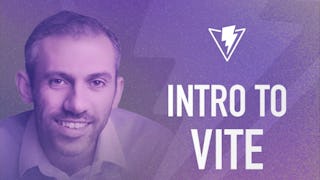Filter by
SubjectRequired
LanguageRequired
The language used throughout the course, in both instruction and assessments.
Learning ProductRequired
LevelRequired
DurationRequired
SkillsRequired
SubtitlesRequired
EducatorRequired
Explore the Elastic Stack Course Catalog
 Status: Free Trial
Status: Free TrialSkills you'll gain: Node.JS, Server Side, Full-Stack Web Development, Back-End Web Development, Authentications, Restful API, API Design, Application Programming Interface (API), Data Modeling, Database Development, Authorization (Computing), JSON, MongoDB, Databases

Skills you'll gain: System Monitoring, Event Monitoring, Google Cloud Platform, Cloud Management, Continuous Monitoring, Application Performance Management, Identity and Access Management, Cloud Applications, Cloud Security, Service Level, Data Access, Query Languages, Interactive Data Visualization
 Status: NewStatus: Preview
Status: NewStatus: PreviewScrimba
Skills you'll gain: Development Environment, TypeScript, React.js, Web Development Tools, JavaScript Frameworks, Software Development Tools, Front-End Web Development, Build Tools, Application Deployment
 Status: Free Trial
Status: Free TrialSkills you'll gain: PHP (Scripting Language), Server Side, Full-Stack Web Development, Back-End Web Development, HTML and CSS, Node.JS, Web Development, JSON, Javascript, Application Programming Interface (API), Extensible Markup Language (XML)
 Status: Free
Status: FreeAmazon Web Services
Skills you'll gain: Amazon S3, Amazon Web Services, Hybrid Cloud Computing, Cloud Storage, Data Storage, Cloud Infrastructure, System Implementation
 Status: Free
Status: FreeAmazon Web Services
Skills you'll gain: Amazon Web Services, Amazon Elastic Compute Cloud, Cloud Engineering, Data Migration
 Status: NewStatus: Free Trial
Status: NewStatus: Free TrialSkills you'll gain: AWS Kinesis, Amazon Web Services, Data Visualization Software, Full-Stack Web Development, Extract, Transform, Load, Application Development, Event-Driven Programming, Cloud Applications, Amazon S3, Business Intelligence, Application Programming Interface (API), Big Data, Serverless Computing, Real Time Data, Data Processing

Skills you'll gain: Amazon Web Services, Penetration Testing, AWS Identity and Access Management (IAM), Amazon Elastic Compute Cloud, Identity and Access Management, Test Tools, Security Testing, Cyber Security Assessment, Vulnerability Assessments, Cloud Security, Scenario Testing, Amazon S3, Command-Line Interface, Key Management
 Status: New
Status: NewSkills you'll gain: Development Environment, Generative AI, Image Analysis, Large Language Modeling, Information Architecture, Artificial Intelligence, System Design and Implementation, Applied Machine Learning, Natural Language Processing, User Interface (UI)
 Status: New
Status: NewSkills you'll gain: AWS Identity and Access Management (IAM), Amazon Web Services, Serverless Computing, Amazon Elastic Compute Cloud, Infrastructure as Code (IaC), Amazon S3, AWS CloudFormation, Cloud Computing, CI/CD, Cloud Infrastructure, Information Technology, Hardware Architecture, IT Infrastructure, Amazon DynamoDB, API Gateway, Containerization, Application Deployment, Command-Line Interface, Scalability
 Status: Free Trial
Status: Free TrialSkills you'll gain: Ajax, Front-End Web Development, Node.JS, Full-Stack Web Development, Server Side, Web Applications, Restful API, Javascript, JSON, Back-End Web Development, Hypertext Markup Language (HTML), Cascading Style Sheets (CSS)
 Status: New
Status: NewSkills you'll gain: Kubernetes, Containerization, Cloud-Native Computing, Docker (Software), Cloud Development, Cloud Applications, Amazon Web Services, Application Deployment, YAML, Network Routing, Configuration Management, Cloud Computing Architecture, Data Storage
Elastic Stack learners also search
In summary, here are 10 of our most popular elastic stack courses
- Full Stack Twitter Clone – API Development: Packt
- Logging and Monitoring in Google Cloud - Français: Google Cloud
- Intro to Vite: Scrimba
- Introduction to AJAX and Mini-Projects: Packt
- AWS Hybrid Storage Services Getting Started: Amazon Web Services
- AWS Migration Evaluator Getting Started: Amazon Web Services
- AWS: Analytics and Application Integration: Whizlabs
- Introduction to AWS Pentesting: Packt
- Multimodal RAG with GPT – Build Smarter Search & AI Systems: Packt
- Intro to AWS - Your First Steps in Cloud Computing: Packt










